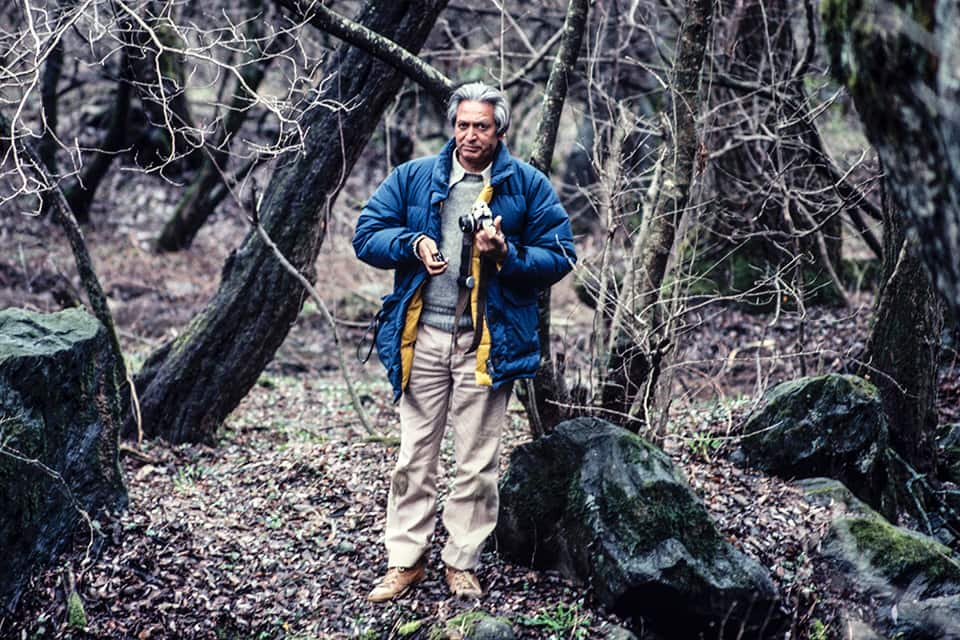



“Do nothing and don’t let anybody do anything.” Kailash Sankhala, Project Tiger’s first director, was convinced about his ‘doing nothing’ hypothesis in tiger conservation – do not interfere with the natural process and ensure least human interference.
Sankhala – Kailash to his friends and Tiger Man to the world - was, as if, to the forest born. Charming, but intolerant towards those who had scant respect for the laws of the jungle and the lives of the animals, Sankhala joined the Indian Forest Service in 1953. For two decades, he managed wildlife sanctuaries including Sariska, Bharatpur, Banvihar, and Ranthambore, but his stint at the Delhi Zoological Park changed the course of tiger conservation in the country.
 (Photo courtesy: Tiger Trust)
(Photo courtesy: Tiger Trust)Before he was appointed as the first director of Project Tiger in 1969, the then Prime Minister Indira Gandhi handpicked Sankhala to lead the team studying forest conservation. Before the Wildlife Protection Act was promulgated in 1972, hunting was not illegal in India and the tiger population was dwindling fast. Sankhala spoke vociferously against hunting and commercial felling of trees, even listing the harsh realities at the International Union for Conservation of Nature (IUCN), a Gland (Switzerland) headquartered international organization working in the field of nature conservation and sustainable use of natural resources.
For four years, Sankhala toured the country, mapping tiger landscapes and documenting behaviour and ecosystem that later became the blueprint of Project Tiger that was officially launched from Corbett’s Dhikala range on April 1, 1973. On that date, India’s tiger population stood at 268. It rose to 1,468 when the Project turned 40. In 2021, the country’s tiger population across 53 tiger reserves was 2,967, accounting for nearly 70 percent of the world’s tiger headcount. Tiger Census 2022 is slated for released on April 9, 2023.
Also read: 50 years of Project Tiger: Spotting tigers on a jeep safari inside Corbett National ParkSankhala was a naturalist, conservationist, author, photographer, and researcher but Anjana Gosain, Chief Functionary Officer of Tiger Trust that Kailash Sankhala founded in 1989, remembers ‘Kailash Uncle’ as the man who lived for the tigers.
“He was absolutely handsome, charming and a great conversationist. When he was in the jungle, tigers are all that mattered to him. So intense was his commitment to saving tigers that he would come home rarely,” says Gosain, who is spearheading Tiger Trust’s objective to train forest guards in the legalities of wildlife offences. So far, Tiger Trust has trained nearly 7,000 forest guards across India.
“Yes, he was intolerant to mediocrity and did not take kindly to any incursions in tiger habitat. No loud music, no garish clothing,” adds Gosain who once had to bear the brunt of Sankhala’s wrath when she walked through Dachigaon National Park (22 km from Srinagar city) in sandals and not in sneakers.
“Kailash uncle was so angry because I did not follow the basic rules of entering a forest area,” says Gosain, who along with Pradeep Sankhala (his son) steered Tiger Trust to focus on the legalities of wildlife offences in the country, which, she says, are not as stringent as they should be.
In his mission to protect tigers, Sankhala faced immense resistance from royals-turned-politicians who often went on shikar (hunt). But the Tiger Man did not give up his fight against hunting. Hunting, of course, was deemed a criminal offence after 1972, so was commercial felling of trees, another pet peeve of Sankhala's.
After retirement, Sankhala wrote The Story of the Tiger which was reissued as The Return of the Tiger, where his personal story was woven with that of tiger conservation. He remains the last forest officer to be awarded a Padma Shri (1993).
The man who dedicated his life to tiger conservation died on August 15, 1994. He was 69. But even 29 years later, tiger conservation owes a debt to Kailash Sankhala. If only the world repeated his chorus: “do not interfere with the natural process and ensure least human interference.”
After all a tiger is a tiger; he has his dignity to preserve even though he isn't aware of it (Ruskin Bond).
 Photo courtesy: Tiger TrustFirst photograph of a tiger in its natural habitat
Photo courtesy: Tiger TrustFirst photograph of a tiger in its natural habitatThe first photograph of a tiger in its natural habitat was taken by Frederick Walter Champion (1893-1970), a member of the Imperial Forestry Service (a precursor to Indian Forest Service) who served in British India. Taken in the Kumaon forests, these earliest images of tigers in the wild were published on the front page of The Illustrated London News on October 3, 1925, and titled ‘A Triumph of Big Game Photography: The First Photographs of Tigers in the Natural Haunts’.
Often described as one of the earliest wildlife photographers, Champion also pioneered camera trapping, championed the need for reducing gun licences and prohibiting motor vehicles from entering the core areas of the forest. When India gained independence in 1947, Champion moved to East Africa.
Good to know: Tiger Trust India is headquartered in New Delhi. For details, visit tigertrustindia.orgDiscover the latest Business News, Sensex, and Nifty updates. Obtain Personal Finance insights, tax queries, and expert opinions on Moneycontrol or download the Moneycontrol App to stay updated!
Find the best of Al News in one place, specially curated for you every weekend.
Stay on top of the latest tech trends and biggest startup news.